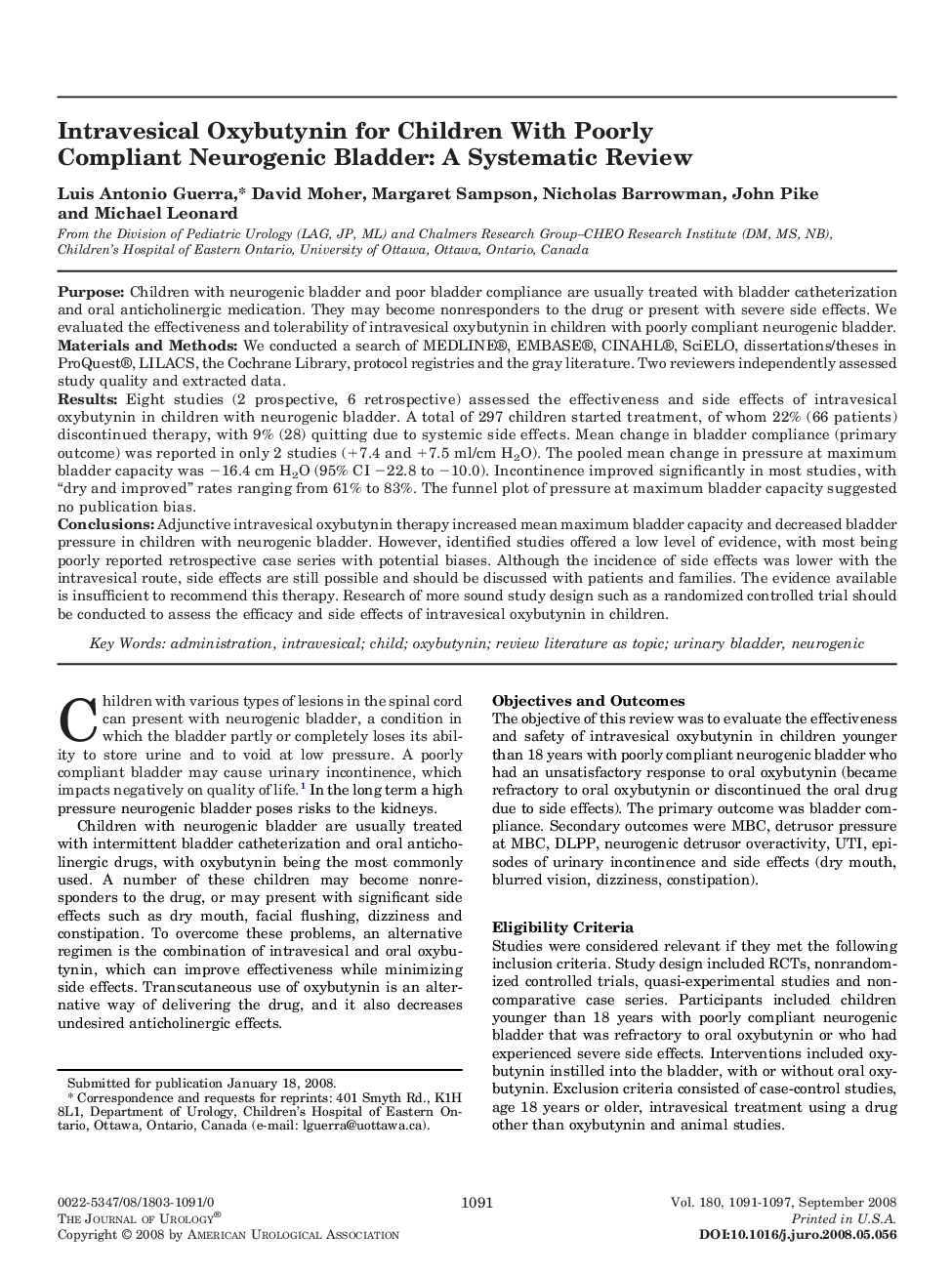| کد مقاله | کد نشریه | سال انتشار | مقاله انگلیسی | نسخه تمام متن |
|---|---|---|---|---|
| 3872870 | 1598989 | 2008 | 7 صفحه PDF | دانلود رایگان |

PurposeChildren with neurogenic bladder and poor bladder compliance are usually treated with bladder catheterization and oral anticholinergic medication. They may become nonresponders to the drug or present with severe side effects. We evaluated the effectiveness and tolerability of intravesical oxybutynin in children with poorly compliant neurogenic bladder.Materials and MethodsWe conducted a search of MEDLINE®, EMBASE®, CINAHL®, SciELO, dissertations/theses in ProQuest®, LILACS, the Cochrane Library, protocol registries and the gray literature. Two reviewers independently assessed study quality and extracted data.ResultsEight studies (2 prospective, 6 retrospective) assessed the effectiveness and side effects of intravesical oxybutynin in children with neurogenic bladder. A total of 297 children started treatment, of whom 22% (66 patients) discontinued therapy, with 9% (28) quitting due to systemic side effects. Mean change in bladder compliance (primary outcome) was reported in only 2 studies (+7.4 and +7.5 ml/cm H2O). The pooled mean change in pressure at maximum bladder capacity was −16.4 cm H2O (95% CI −22.8 to −10.0). Incontinence improved significantly in most studies, with “dry and improved” rates ranging from 61% to 83%. The funnel plot of pressure at maximum bladder capacity suggested no publication bias.ConclusionsAdjunctive intravesical oxybutynin therapy increased mean maximum bladder capacity and decreased bladder pressure in children with neurogenic bladder. However, identified studies offered a low level of evidence, with most being poorly reported retrospective case series with potential biases. Although the incidence of side effects was lower with the intravesical route, side effects are still possible and should be discussed with patients and families. The evidence available is insufficient to recommend this therapy. Research of more sound study design such as a randomized controlled trial should be conducted to assess the efficacy and side effects of intravesical oxybutynin in children.
Journal: The Journal of Urology - Volume 180, Issue 3, September 2008, Pages 1091–1097